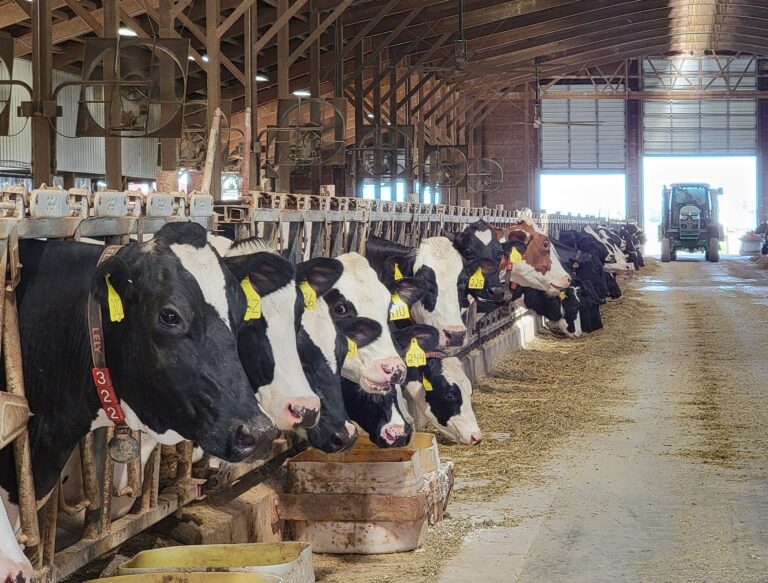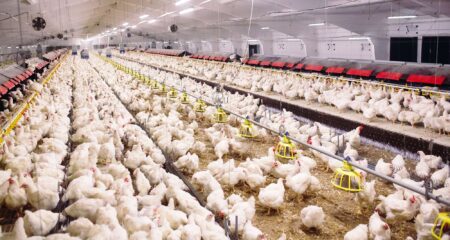Since its first detection in poultry, Highly Pathogenic Avian Influenza H5N1 has been notorious for high mortality in birds. However, the virus’s leap into dairy cattle marks a critical shift.
In spring 2024, a large dairy farm in Ohio experienced a severe HPAI H5N1 outbreak after introducing cows from an affected Texas farm. What followed was a cascade of health deterioration and financial loss, giving scientists a rare opportunity to analyze the virus’s pathophysiological and economic footprint in cattle.
Out of 3,876 cows, 777 (20 percent) developed clinical signs including fever, respiratory symptoms, inappetence, and –most alarmingly — mastitis with abnormally thick, colostrum-like milk. These signs led to a drastic reduction in milk production and rumination. Data from the Afimilk monitoring system showed a consistent pattern: both milk yield and rumination began dropping five to seven days before visible clinical signs emerged.
-
Rumination dropped by 160 minutes/day at peak illness.
-
Milk production fell from ~36 kg/day to 11.6 kg/day, marking a 73% reduction.
-
Recovery was slow, with milk yield remaining depressed for over 60 days post-diagnosis.
A recent study published in Nature Communications reveals the effects of H5N1 on a U.S. dairy farm, demonstrating that cattle are not just susceptible to infection — they can suffer profound health consequences and drive major economic losses for producers.
Led by Felipe Peña-Mosca and colleagues at Cornell University and other institutions, the study focuses on a large-scale outbreak that occurred in the spring of 2024 at a dairy farm in Ohio. It offers the first real-world, in-depth look at how H5N1 infection affects dairy cattle health, milk production, mortality, and overall farm economics.
The study also highlighted the extent of subclinical infections. Serological testing conducted three months post-outbreak showed that 89.4 percent of the herd had developed antibodies to H5N1. Astonishingly, 76.1 percent of those seropositive cows never showed clinical signs — suggesting widespread but silent transmission of the virus.
However, only clinically affected cows showed significant drops in milk production, while subclinical animals maintained pre-outbreak output levels. This distinction is critical for understanding the true sources of economic impact.
The researchers performed a detailed cost analysis over a 67-day period (spanning one week before and two months after the outbreak began). They estimated:
- $222 in lost milk per affected cow
- $166 in death-related losses per cow
- $448 in replacement costs for culled cows
Combined, the average cost of clinical H5N1 illness per cow reached $932, resulting in a total herd loss of about $737,500. These estimates do not even account for longer-term effects such as disrupted reproduction cycles, labor costs, or extended milk suppression.


:max_bytes(150000):strip_icc()/IMG_7936-c12c642ad0064146a4aecfc1a60502a3.jpeg)
:max_bytes(150000):strip_icc()/HTTJohnDeeretractorwithtillage_preview-6e8cfa3643f043efb29085bd78d76c98.jpg)
:max_bytes(150000):strip_icc()/Canadian20flag48553671412_aeb0538794_c-0bfa123de2b54e30ab4fadecae382d4a.jpg)





:max_bytes(150000):strip_icc()/WheatField-CloseUp-2000-bc79406da4004a2d94bcb2c32153cc3a.jpg)